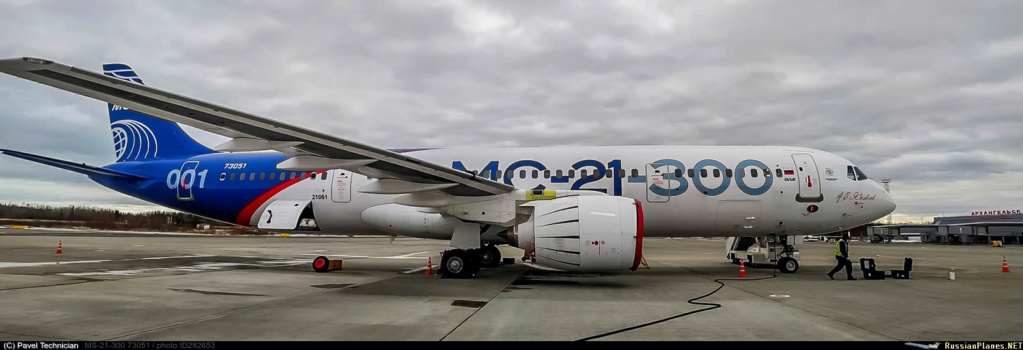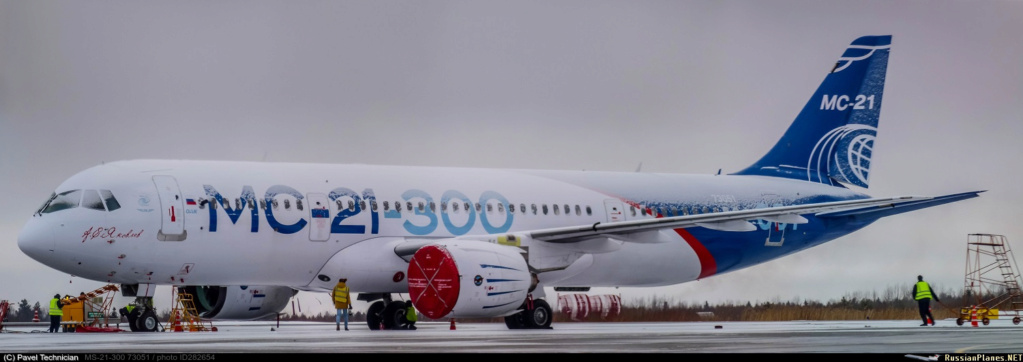What makes the new "board number 1" unique for the President of Russia
11.4.2021
The President of Russia will receive a new "board number 1" - at least, this directly follows from the tests that have begun on the Il-96-300PU airliner. Why is this particular airliner used as a government aircraft in Russia, what features does it have in terms of everyday life, communications and safety, and what do the PU letters in its name mean?
Few can boast that they flew, they say, on the IL-96. Serial production of these long-range wide-body aircraft (since 1993 at the plant of the Voronezh Joint-Stock Aircraft Building Company) was limited - 25 aircraft. Six of them were produced for Aeroflot, which completed its operation in 2014, three more for Domodedovo Airlines, which were put on the hook back in 2008. The rest are for the needs of the Ilyushin Design Bureau and the Rossiya special flight unit serving the president and the government.
Actually, only Vladimir Putin flies around the country and abroad (before the pandemic) on the Il-96-300PU (M). What is the reason for this, when the president completely trusts his airliner, and Russian airlines have abandoned an aircraft of this class?
Ever since the creation of the IL-96 (based on the IL-86 liner), this passenger aircraft was considered the most promising domestic development. As a result, it became a kind of pinnacle of the domestic civil aircraft industry and could turn into a worthy competitor to Boeing and Airbus systems of the same class.
During the tests, the Il-96 made a unique non-stop flight Moscow - Petropavlovsk-Kamchatsky - Moscow, covering a distance of 14,800 kilometers in 18 hours and 9 minutes. The liner was successfully operated on foreign flights - it flew to Singapore, New York, Tokyo, Havana and a number of other cities. The Il-96, according to one of its first pilots, Sergei Knyshov, was worthy of a better lot - a Russian-made aircraft could provide the continuation of a whole series of domestic passenger liners.
The Il-96 turned out to be too heavy for Russian airlines due to its high cost, it was more profitable to lease foreign airliners. And, of course, a significant drawback of the machine in comparison with foreign counterparts was the fact that the Il-96 uses four engines, and foreign ones - two. Accordingly, the domestic car has higher fuel consumption and operating costs.
By the way, Aeroflot at one time undertook to purchase additional Il-96s in exchange for a reduction in duties on the import of foreign equipment, but the deal did not take place, although the duties were reduced. However, such a fate awaited the rest of the domestic airliners, which ultimately put the Russian aviation industry on the brink of survival.
It turns out that the "luxury" of flying on airplanes is available only to the government? President Boris Yeltsin became the first "passenger No. 1" of the Il-96-300. Then Vladimir Putin moved to a similar one, for whom a new plane was built in Voronezh (first flight in 2003). Then several more similar machines were put into operation, including for President Medvedev. And now a new special board has been made, its first test flights have begun . It is not officially reported that this machine will be used by the president of the country, but the letters PU (control center) in its name leave no doubt about its real purpose.
“There are a number of reasons why the Il-96 is now being used as a government aircraft,” Honored Pilot of the Russian Federation Vladimir Talanov explained to the VZGLYAD newspaper. - Firstly, it is indeed a very reliable and safe aircraft, which is confirmed by the long-term operation of this aircraft. Plus, this is an element of prestige for the head of state - the leader of not every country can afford to fly on "his" plane, made by the forces of his own state.
Secondly, the very concept of "board number 1" is not just one aircraft, because, in addition to the advanced aircraft, there is always a reserve aircraft: with guards, assistants, and journalists. And if some breakdown occurs or a malfunction occurs, especially at a foreign airport, the president will switch to a spare liner - and there will be no hesitation or embarrassment. After all, abroad there is no proper base of spare parts for prompt repair. They will find it quickly for a Boeing or a watermelon; for Russian airliners, which you practically cannot see on international flights now, this can become a big problem related to the delivery of spare parts.
The presidential Il-96-300 with a reserve aircraft provides a kind of double security guarantee".
So the current Il-96-300PU (control center), which has now made its first flight in Voronezh, will go straight to the special flight unit "Russia" upon commissioning, as evidenced by the corresponding inscription on its fuselage. VASO Managing Director Farit Sharafeev does not focus on who will be the operator of the new aircraft. He only notes: “The IL-96 program traditionally provides the main load of the plant. About 70 percent of the company's employees are employed on this project. We have accumulated colossal experience in the production of such machines. Today we are consistently provided with orders under the IL-96 program. " And if you look at the schedule for the release of these aircraft from 2011, then in 10 years they were produced six units - exactly for the needs of the government squadron.
The current new aircraft was produced in the modification of the Il-96-300, and not the Il-96-400, which is considered as a passenger aircraft with a larger capacity. It is 10 meters longer, and the number 400 is the number of passenger seats in the cabin. The launch of production of "four hundred" in VASO was discussed in 2016, and in 2018, and in 2019. It seems that the assembly of the airframe elements of the first Il-96-400M airliner has even begun, but at the exit again there was a presidential "three hundred" aircraft.
By the way, the Russian Defense Minister Sergei Shoigu flies on the Il-96-400VPU (military command post) with registration number RA-96102. For him, in 2016, it was converted into a "special board" from a cargo Il-96T (transport).
It should be understood that the Il-96-300PU aircraft is a means of air travel for the head of a nuclear power. And the chief leader must be aware of all events related to the security of the country, and be able to make a decision at any time in accordance with the situation - up to pressing the nuclear "red button". Detailed information about the stuffing of this aircraft is one of the most important state secrets. It is clear that the head of state has at his fingertips all the necessary means of communication - satellite and other special communication channels, which make it possible to transmit messages encrypted with a special code from any height to anywhere in the world.
With a high degree of probability, it can be assumed that "board number 1" is also equipped with the "President-S" complex, which is designed for individual protection of the aircraft from being hit by aviation and anti-aircraft missile systems. This complex detects missile launches and activates the use of passive and active interference in infrared and radio bands, as a result of which the operation of missile homing systems is disrupted and their retargeting is carried out.
More is known about the other stuffing of the "presidential board" - household. In particular, the liner has a mini-gym, rest rooms, a canteen, a bar, showers and a medical unit for resuscitation and emergency medical care.
The best jewelers from Zlatoust worked on the interior decoration of the current “Putin's plane” Il-96-300PU, built on special order in Voronezh, the salon was decorated with engravings on historical themes, embroidered by masters of the Pavlovo-Posad silk factory, etc. After all, the president's plane, which here he also received very important foreign persons - the stamp of the state must be kept, and even the liner, which is called the "flying Kremlin", must correspond to the level. All this, by the way, determines its cost - many billions of rubles.
The long-haul Il-96 is still the pinnacle of the domestic civil aviation industry, which now, for a variety of reasons, relies on much smaller aircraft. In particular, at the same VASO, the Il-114-300 turboprop intended for local airlines is being tested, and the Il-112V light military transport, which also made only its second test flight. Sukhoi Superjet 100 continues to be serially built, of which 207 units have been produced at the aircraft plant in Komsomolsk-on-Amur since 2011.
And, of course, the main hope of the Russian aircraft industry is the medium-range MS-21, which is actively being tested. Perhaps he, too, will one day take the place of "board number one".
Text: Victor Sokirko
https://m.vz.ru/society/2021/4/11/1093986.html












 Kiko
Kiko